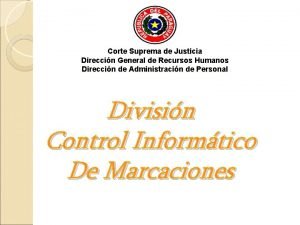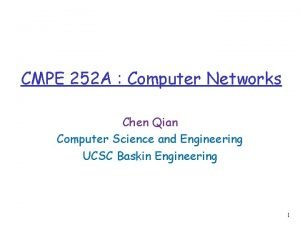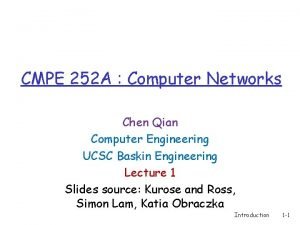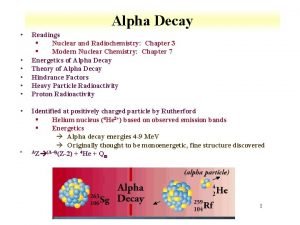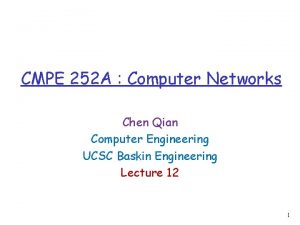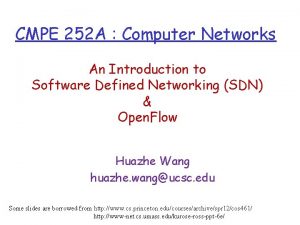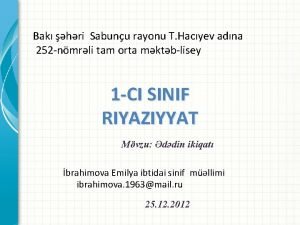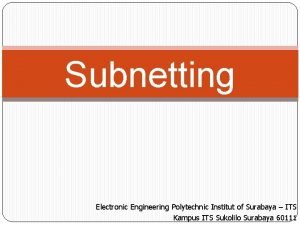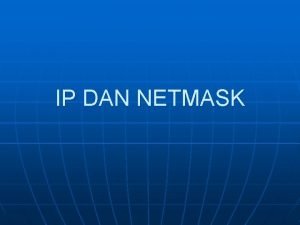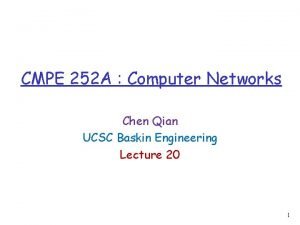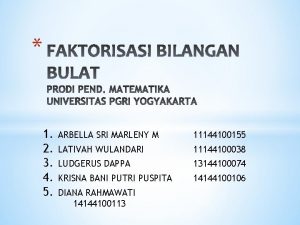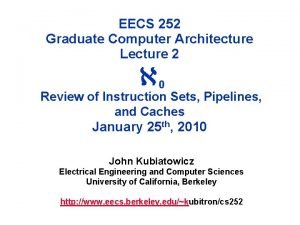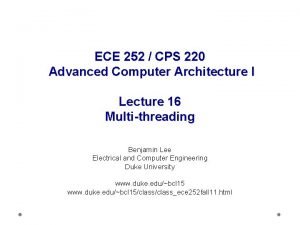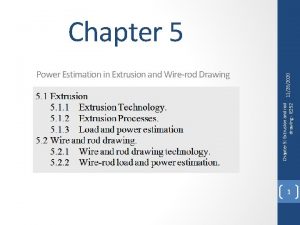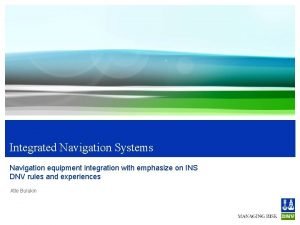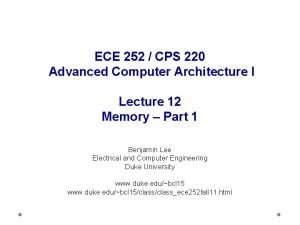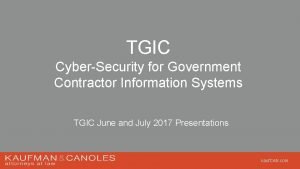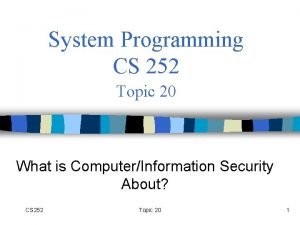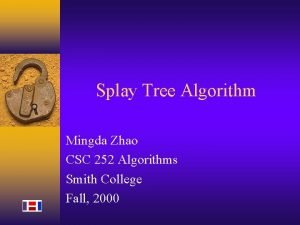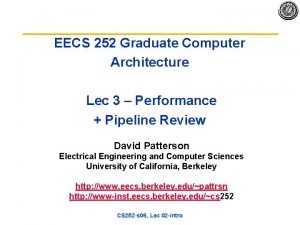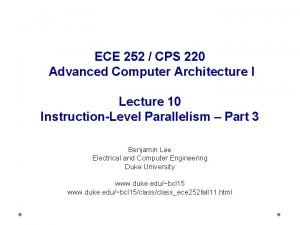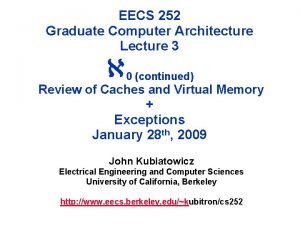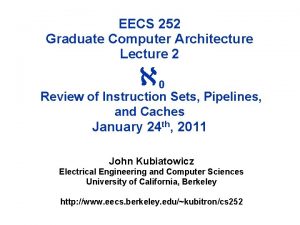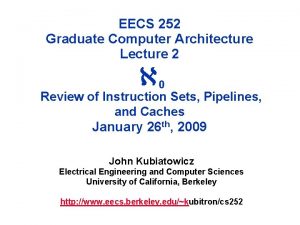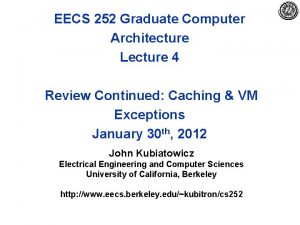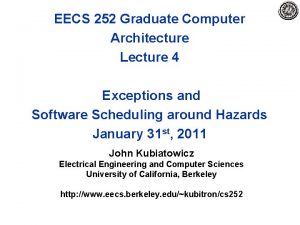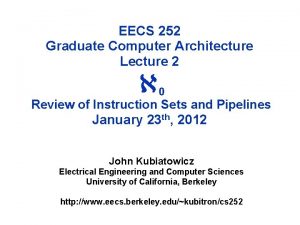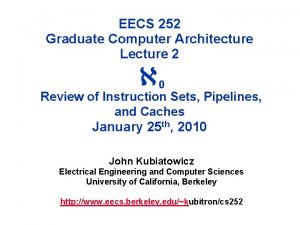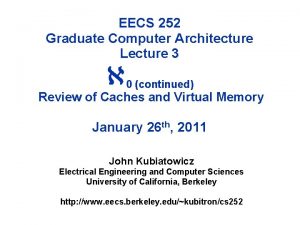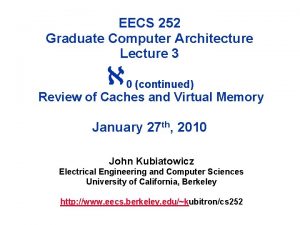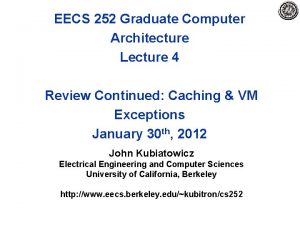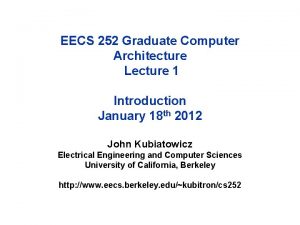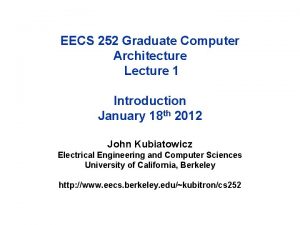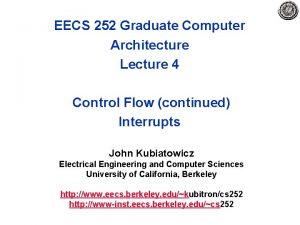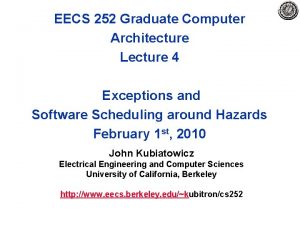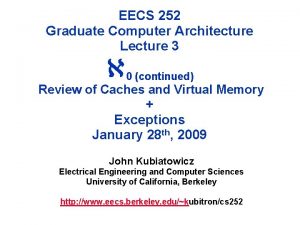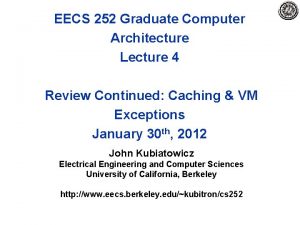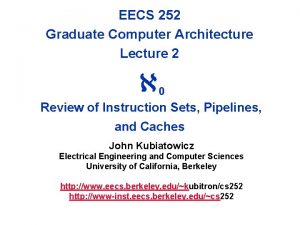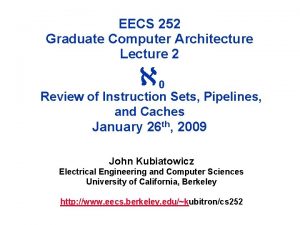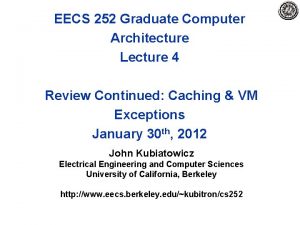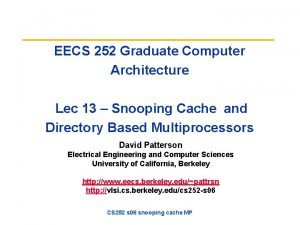EECS 252 Graduate Computer Architecture Lecture 2 0

































- Slides: 33

EECS 252 Graduate Computer Architecture Lecture 2 0 Review of Instruction Sets and Pipelines January 23 th, 2012 John Kubiatowicz Electrical Engineering and Computer Sciences University of California, Berkeley http: //www. eecs. berkeley. edu/~kubitron/cs 252

Review: Moore’s Law • “Cramming More Components onto Integrated Circuits” – Gordon Moore, Electronics, 1965 • 1/23/2012 # on transistors on cost-effective integrated circuit double every 18 months cs 252 -S 12, Lecture 02 2

log (people per computer) “Bell’s Law” – new class per decade Number Crunching Data Storage productivity interactive • Enabled by technological opportunities streaming information to/from physical world year • Smaller, more numerous and more intimately connected • Brings in a new kind of application • Used in many ways not previously imagined 1/23/2012 cs 252 -S 12, Lecture 02 3

Review: Crossroads: Uniprocessor Performance From Hennessy and Patterson, Computer Architecture: A Quantitative Approach, 4 th edition, October, 2006 • VAX : 25%/year 1978 to 1986 • RISC + x 86: 52%/year 1986 to 2002 • RISC + x 86: ? ? %/year 2002 to present 1/23/2012 cs 252 -S 12, Lecture 02 4

Modern ILP • Dynamically scheduled, out-of-order execution – Current microprocessor 6 -8 of instructions per cycle – Pipelines are 10 s of cycles deep many simultaneous instructions in execution at once – Unfortunately, hazards cause discarding of much work • What happens: – Grab a bunch of instructions, determine all their dependences, eliminate dep’s wherever possible, throw them all into the execution unit, let each one move forward as its dependences are resolved – Appears as if executed sequentially – On a trap or interrupt, capture the state of the machine between instructions perfectly • Huge complexity – Complexity of many components scales as n 2 (issue width) – Power consumption big problem 1/23/2012 cs 252 -S 12, Lecture 02 5

IBM Power 4 • Combines: Superscalar and OOO • Properties: – 8 execution units in out-of-order engine, each may issue an instruction each cycle. – In-order Instruction Fetch, Decode (compute dependencies) – Reordering for in-order commit 1/23/2012 cs 252 -S 12, Lecture 02 6

Have we reached the end of ILP? • Multiple processor easily fit on a chip • Every major microprocessor vendor has gone to multithreaded cores – Thread: loci of control, execution context – Fetch instructions from multiple threads at once, throw them all into the execution unit – Intel: hyperthreading, Sun: – Concept has existed in high performance computing for 20 years (or is it 40? CDC 6600) • Vector processing – Each instruction processes many distinct data – Ex: MMX • Raise the level of architecture – many processors per chip Tensilica Configurable Proc 1/23/2012 cs 252 -S 12, Lecture 02 7

Limiting Forces: Clock Speed and ILP • Chip density is continuing increase ~2 x every 2 years Source: Intel, Microsoft (Sutter) and Stanford (Olukotun, Hammond) – Clock speed is not – # processors/chip (cores) may double instead • There is little or no more Instruction Level Parallelism (ILP) to be found – Can no longer allow programmer to think in terms of a serial programming model • Conclusion: Parallelism must be exposed to software! 1/23/2012 cs 252 -S 12, Lecture 02 8

Examples of MIMD Machines • Symmetric Multiprocessor – Multiple processors in box with shared memory communication – Current Multi. Core chips like this – Every processor runs copy of OS • Non-uniform shared-memory with separate I/O through host – Multiple processors » Each with local memory » general scalable network – Extremely light “OS” on node provides simple services » Scheduling/synchronization – Network-accessible host for I/O P P Bus Memory P/M P/M Host P/M P/M • Cluster – Many independent machine connected with general network – Communication through messages 1/23/2012 cs 252 -S 12, Lecture 02 9

Time (processor cycle) Categories of Thread Execution Superscalar Simultaneous Fine-Grained. Coarse-Grained. Multiprocessing. Multithreading Thread 1 Thread 2 1/23/2012 Thread 3 Thread 4 cs 252 -S 12, Lecture 02 Thread 5 Idle slot 10

Today: Quick review of everything you should have learned 0 ( A countably-infinite set of computer architecture concepts ) 1/23/2012 cs 252 -S 12, Lecture 02 11

Metrics used to Compare Designs • Cost – Die cost and system cost • Execution Time – average and worst-case – Latency vs. Throughput • Energy and Power – Also peak power and peak switching current • Reliability – Resiliency to electrical noise, part failure – Robustness to bad software, operator error • Maintainability – System administration costs • Compatibility – Software costs dominate 1/23/2012 cs 252 -S 12, Lecture 02 12

What is Performance? • Latency (or response time or execution time) – time to complete one task • Bandwidth (or throughput) – tasks completed per unit time 1/23/2012 cs 252 -S 12, Lecture 02 13

Definition: Performance • Performance is in units of things per sec – bigger is better • If we are primarily concerned with response time performance(x) = 1 execution_time(x) " X is n times faster than Y" means Performance(X) n = Execution_time(Y) = Performance(Y) 1/23/2012 cs 252 -S 12, Lecture 02 Execution_time(X) 14

Performance: What to measure • Usually rely on benchmarks vs. real workloads • To increase predictability, collections of benchmark applications-- benchmark suites -- are popular • SPECCPU: popular desktop benchmark suite – – CPU only, split between integer and floating point programs SPECint 2000 has 12 integer, SPECfp 2000 has 14 integer pgms SPECCPU 2006 to be announced Spring 2006 SPECSFS (NFS file server) and SPECWeb (Web. Server) added as server benchmarks • Transaction Processing Council measures server performance and cost-performance for databases – – 1/23/2012 TPC-C Complex query for Online Transaction Processing TPC-H models ad hoc decision support TPC-W a transactional web benchmark TPC-App application server and web services benchmark cs 252 -S 12, Lecture 02 15

Summarizing Performance System Rate (Task 1) Rate (Task 2) A 10 20 B 20 10 Which system is faster? 1/23/2012 cs 252 -S 12, Lecture 02 16

… depends who’s selling System Rate (Task 1) Rate (Task 2) Average A 10 20 15 B 20 10 15 Average throughput System Rate (Task 1) Rate (Task 2) Average A 0. 50 2. 00 1. 25 B 1. 00 Throughput relative to B System Rate (Task 1) Rate (Task 2) Average A 1. 00 B 2. 00 0. 50 1. 25 Throughput relative to A 1/23/2012 cs 252 -S 12, Lecture 02 17

Summarizing Performance over Set of Benchmark Programs • 1/23/2012 cs 252 -S 12, Lecture 02 18

Normalized Execution Time and Geometric Mean • 1/23/2012 cs 252 -S 12, Lecture 02 19

Vector/Superscalar Speedup • 100 MHz Cray J 90 vector machine versus 300 MHz Alpha 21164 • [LANL Computational Physics Codes, Wasserman, ICS’ 96] • Vector machine peaks on a few codes? ? 1/23/2012 cs 252 -S 12, Lecture 02 20

Superscalar/Vector Speedup • 100 MHz Cray J 90 vector machine versus 300 MHz Alpha 21164 • [LANL Computational Physics Codes, Wasserman, ICS’ 96] • Scalar machine peaks on one code? ? ? 1/23/2012 cs 252 -S 12, Lecture 02 21

How to Mislead with Performance Reports • • • Select pieces of workload that work well on your design, ignore others Use unrealistic data set sizes for application (too big or too small) Report throughput numbers for a latency benchmark Report latency numbers for a throughput benchmark Report performance on a kernel and claim it represents an entire application • Use 16 -bit fixed-point arithmetic (because it’s fastest on your system) even though application requires 64 -bit floating-point arithmetic • Use a less efficient algorithm on the competing machine • Report speedup for an inefficient algorithm (bubblesort) • Compare hand-optimized assembly code with unoptimized C code • Compare your design using next year’s technology against competitor’s year old design (1% performance improvement per week) • Ignore the relative cost of the systems being compared • Report averages and not individual results • Report speedup over unspecified base system, not absolute times • Report efficiency not absolute times • Report MFLOPS not absolute times (use inefficient algorithm) [ David Bailey “Twelve ways to fool the masses when giving performance results for parallel supercomputers” ] 1/23/2012 cs 252 -S 12, Lecture 02 22

CS 252 Administrivia • Sign up! Web site is: http: //www. cs. berkeley. edu/~kubitron/cs 252 • Review: Chapter 1, Appendix A, B, C • CS 152 home page, maybe “Computer Organization and Design (COD)2/e” – If did take a class, be sure COD Chapters 2, 5, 6, 7 are familiar – Copies in Bechtel Library on 2 -hour reserve • Resources for course on web site: – Check out the ISCA (International Symposium on Computer Architecture) 25 th year retrospective on web site. Look for “Additional reading” below text-book description – Pointers to previous CS 152 exams and resources – Lots of old CS 252 material – Interesting links. Check out the: WWW Computer Architecture Home Page 1/23/2012 cs 252 -S 12, Lecture 02 23

CS 252 Administrivia • First readings due today – Next two readings posted • Read the assignment carefully, since the requirements vary about what you need to turn in – Submit results to website before class » (will be a link up on handouts page) – You can have 5 total late days on assignments » 10% per day afterwards » Save late days! – If you access papers remotely, username and password: » User: cs 252 » Password: parallelism 1/23/2012 cs 252 -S 12, Lecture 02 24

RISC: The integrated systems view (Discussion of Papers) • “The Case for the Reduced Instruction Set Computer” – Dave Patterson and David Ditzel • “Comments on ‘The Case for the Reduced Instruction Set Computer’” – Doug Clark and William Strecker • “"Retrospective on High-Level Computer Architecture" – David Ditzel and David Patterson In-class discussion of these papers 1/23/2012 1/27/2010 cs 252 -S 12, Lecture 02 CS 252 -S 10, Lecture 03 25 25

Amdahl’s Law Best you could ever hope to do: 1/23/2012 cs 252 -S 12, Lecture 02 26

Amdahl’s Law example • New CPU 10 X faster • I/O bound server, so 60% time waiting for I/O • Apparently, its human nature to be attracted by 10 X faster, vs. keeping in perspective its just 1. 6 X faster 1/23/2012 cs 252 -S 12, Lecture 02 27

CPI Computer Performance inst count CPU time = Seconds = Instructions x Program Instruction CPI Program Inst Count X Compiler X (X) Inst. Set. X X Organization X Technology 1/23/2012 Cycles Cycle time x Seconds Cycle Clock Rate X X cs 252 -S 12, Lecture 02 28

Cycles Per Instruction (Throughput) “Average Cycles per Instruction” CPI = (CPU Time * Clock Rate) / Instruction Count = Cycles / Instruction Count “Instruction Frequency” 1/23/2012 cs 252 -S 12, Lecture 02 29

Example: Calculating CPI bottom up Run benchmark and collect workload characterization (simulate, machine counters, or sampling) Base Machine Op ALU Load Store Branch (Reg / Freq 50% 20% 10% 20% Reg) Cycles 1 2 2 2 Typical Mix of instruction types in program CPI(i). 5. 4. 2. 4 1. 5 (% Time) (33%) (27%) (13%) (27%) Design guideline: Make the common case fast MIPS 1% rule: only consider adding an instruction of it is shown to add 1% performance improvement on reasonable benchmarks. 1/23/2012 cs 252 -S 12, Lecture 02 30

Power and Energy • Energy to complete operation (Joules) – Corresponds approximately to battery life – (Battery energy capacity actually depends on rate of discharge) • Peak power dissipation (Watts = Joules/second) – Affects packaging (power and ground pins, thermal design) • di/dt, peak change in supply current (Amps/second) – Affects power supply noise (power and ground pins, decoupling capacitors) 1/23/2012 cs 252 -S 12, Lecture 02 31

Peak Power versus Lower Energy Peak A Peak B Power Integrate power curve to get energy Time • System A has higher peak power, but lower total energy • System B has lower peak power, but higher total energy 1/23/2012 cs 252 -S 12, Lecture 02 32

Summary: Measurement • Chip density is continuing increase ~2 x every 2 years – Clock speed is not – # processors/chip (cores) may double instead • Always have metrics and benchmarks in mind to justify comparisons between different systems • Amdalls Law: • Performance measurement: CPU time = Seconds Program 1/23/2012 = Instructions x Program cs 252 -S 12, Lecture 02 Cycles x Seconds Instruction Cycle 33
 Computer architecture lecture notes
Computer architecture lecture notes Computer architecture lecture
Computer architecture lecture 01:640:244 lecture notes - lecture 15: plat, idah, farad
01:640:244 lecture notes - lecture 15: plat, idah, farad Bus design in computer architecture
Bus design in computer architecture Computer architecture and computer organization difference
Computer architecture and computer organization difference Basic computer organization and design
Basic computer organization and design Acordada 252/02
Acordada 252/02 Cmpe 252
Cmpe 252 Cmpe 252
Cmpe 252 Cf-252 decay scheme
Cf-252 decay scheme Simplify square root of 320
Simplify square root of 320 Bone marrow hops 252
Bone marrow hops 252 Cmpe 252
Cmpe 252 Cmpe 252
Cmpe 252 Abcde em hexadecimal
Abcde em hexadecimal 252 nomreli mekteb
252 nomreli mekteb 252 netmask
252 netmask 252 netmask
252 netmask 252 basics
252 basics Chen qian ucsc
Chen qian ucsc Fpb dari 198
Fpb dari 198 252
252 Ece 252
Ece 252 Extrusion ratio
Extrusion ratio Mcd
Mcd Msc.252(83)
Msc.252(83) Dfars 252
Dfars 252 Ece 252
Ece 252 Dfars 252 204 7012
Dfars 252 204 7012 Cs 252
Cs 252 Mingda zhao
Mingda zhao Chapter 252 florida statutes
Chapter 252 florida statutes 252 lec
252 lec Cps 220
Cps 220






